What is your plan after your retirement? Most people choose to spend part of their time traveling and China is one of their choices. Have a look at this 12 days China senior tour with Tibet. We will take you to Tibet – Roof of the World. Besides, you will also visit three major cities in China, Beijing, Xian, and shanghai. In addition to the attractive cities, we have also prepared experienced divers, comfortable vehicles, considerate guides as well as hand-picked hotels and restaurants for you. You just need to leave all the worry to us and enjoy the best China tour for seniors. The most important is this tour is available to be customized. If you want to change the sightseeing spots of even the city in the itinerary, just let us know! We will tailor your trip!

Welcome to China! Your amazing tour in China starts from Beijing Capital International Airport or Beijing Daxing International Airport. Our professional local guide will be waiting for you at the arrival hall, holding a sign with your name on it. Then you will head to the hotel in downtown Beijing.
As the capital of China, Beijing is not only the political and cultural center of the country but also the hub of international exchanges. It is listed as one of the six ancient capitals of China together with Xi’an, Luoyang, Kaifeng, Nanjing, and Hangzhou. Moreover, with a history of more than three thousand years, Beijing is also one of the world’s famous historical and cultural cities and ancient capitals.
When you arrive at the hotel, the guide will help you to check in, and please make sure to take care of your belongings. Your tour in Beijing will officially start on the second day, so you can just walk around by yourself today and enjoy what you find. Wish you a happy stay in China.
After breakfast, you will pay a visit to your first scenic spot in China – Tian’anmen Square which is the largest city center square in the world. Located in the center of Beijing and the south side of the Forbidden City, Tian’anmen Gate Tower was first built in 1420 in the Ming Dynasty (1368 - 1644). Originally, it was only a three-story wooden archway. After rebuilding for several times, it got its current appearance. The founding ceremony of the People’s Republic of China was held on Tian’anmen Gate Tower on October 1, 1949. Since then, it has become a symbol of new China.
After the tour of the square, you will head to the Forbidden City (closed each Monday), also known as the Imperial Palace, which is the largest royal palace in the world. It covers an area of 720,000 square meters. Its construction started in 1406 and was completed in 1420. Listed as one of the World Cultural Heritage Sites, the Forbidden City is one of the largest and best-preserved ancient wooden structures in the world. It used to be the living and working place for 24 Chinese emperors. And the first emperor in the Forbidden City is Emperor Zhu Di in the Ming Dynasty. It is he who moved the capital of the Ming Dynasty from Nanjing to Beijing and then commanded to build this gorgeous palace.
After the tour of the Forbidden City, you will have your lunch at a local restaurant.
After lunch, you will visit the Lama Temple. Lama Temple, also known as Yonghe Palace, is the largest and best-preserved Tibetan Buddhist temple in Beijing. It used to be the residence of Emperor Yongzheng in the Qing Dynasty (1644 - 1912). Covering an area of 66,400 square meters, the temple mainly consists of three exquisite memorial archways and five magnificent halls. The wood carving is a highlight in the Lama Temple. Here you will see a mountain carved with padauk. The mountain is so vivid that you can even see pavilions on the mountains. Besides, you will also see 500 arhat statues in different poses on the mountains. Don’t miss this exquisite wood carving.
The last stop of today’s tour is the Temple of Heaven which is listed as one of the World Cultural Heritage Sites. Standing for more than 500 years and occupying an area of 2,720,000 square meters, it was originally built for emperors of the Ming and Qing Dynasties to worship heaven for good harvests. Most of the buildings in the Temple of Heaven are related to the rituals. The Hall of Prayer for Good Harvest just as its name implies that it is the place for praying for a good harvest. The circular Mound Altar is the place where the emperor will read out an article for worship when he offers sacrifice to the God of Heaven. The Hall of Abstinence is the place where the emperor keeps fasting before the ritual. Therefore, after visiting the Temple of Heaven, you will know more about Chinese sacrificial culture.

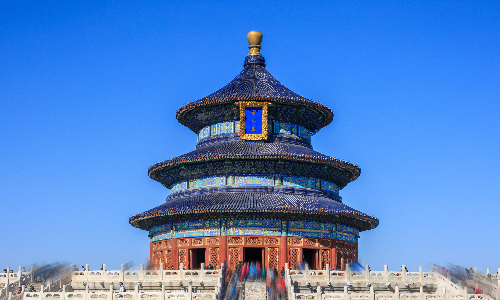
In the morning, you will enjoy your breakfast at the hotel. After that, you will set out for the Ming Tombs which is located northwest of Beijing City. And it will take about 60 minutes to get there (about 50 KM). The Ming Tombs is the burial place of 13 emperors and 23 empresses, as well as many concubines, princes, and princesses of the Ming Dynasty. The construction of the tombs spanned about 230 years, and the total area of them amounts to over 120 square kilometers. Today, you will pay a visit to the Ding Tomb, which is the tomb of Emperor Wanli (1573 - 1620) and his two empresses and it is also one of the three largest tombs there.
After the tour in the morning, you will have lunch in a local restaurant, and then you will leave for the Mutianyu Great Wall. We will drive northeast for about 1 hour (45KM). Built in the Ming Dynasty, the Mutianyu Great Wall is one of the best-preserved parts of the Great Wall and is praised as its most magnificent part. Apart from beautiful landscapes, cable cars, chairlifts and toboggan are also provided in the scenic area, making it much more convenient for people of all ages to visit. You will climb up to the Great Wall and have a close look at the Beacon Towers, the crenels, and other historical buildings on the Great Wall.
On the way back to the hotel after the wonderful time at the Mutianyu Great Wall, you will drop by the Bird’s Nest (the National Stadium) and the Water Cube (the National Aquatic Center). The National Stadium was the main stadium for the 2008 Beijing Olympic Games while the National Aquatic Center was built as the major natatorium. Both of them are famous for their dramatic building design. You will pay a visit outside and you may take some photos if you like.
Your tour in Beijing is to come to the end, and you will leave for Chengdu the next day.
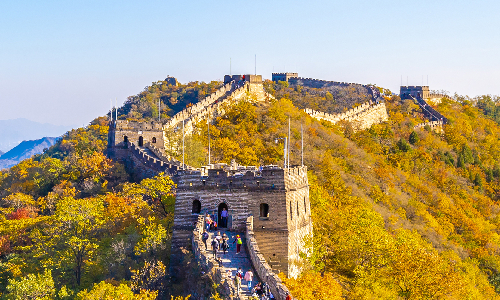

 Chengdu
Chengdu After breakfast, our guide will pick you up at the hotel, and then you will head to the airport. You will take the estimated flight ZH4114 12:30/15:45 to Chengdu. Upon your arrival, the local guide will be holding a sign with your name on it and waiting for you at the arrival hall, and then you will be taken to the hotel in downtown Chengdu. Please take care of all your belongings.
Located in the southwest of China, Chengdu is praised as the “Land of Abundance.” With a long history and rich culture, Chengdu is not only an ancient city but also one of the most popular destinations for tourists in China and beyond. The rich historical sites, vibrant nightlife, and amazing local cuisine make Chengdu a place that visitors do not want to leave. What is more, for nature and animal lovers, Chengdu is home to towering bamboos and the giant pandas, one of China’s national treasures. Your tour here will be definitely worthwhile.
When you arrive at the hotel, the guide will help you to check in. May you have a good rest today.
After having breakfast, your tour in Chengdu begins. The first stop is Chengdu Research Base of Giant Panda Breeding, which is the best place to see the lovely giant pandas. You can closely observe how pandas eat, rest, and play with each other, and see how baby pandas are raised. More importantly, you can further understand how to protect these docile creatures.
After the interesting tour with pandas, you will have lunch. Afterward, you will go to Jinli Street, a famous pedestrian street which you cannot miss. It has been one of the busiest streets in Chengdu since ancient times, you may get a taste of different kinds of authentic and mouth-watering local snacks here. The antique buildings along the streets are of architectural styles of the late Qing period (1840-1912). Moreover, when strolling around the street, you may also get the chance to see skilled folk craftsmen making exquisite Chinese traditional handicrafts, including paper-cutting, clay figurines, and sugar paintings, etc. Life on this street can best represent the leisurely ambiance of the city.
After the tour on the pedestrian street, you will go to today’s last stop, Wuhou Shrine Museum, a place to commemorate Zhuge Liang, a top official of the Kingdom of Shu during the Three Kingdoms Period (220 - 280). It was built in the year 221 for Zhuge Liang, and later also housed Liu Bei, the emperor of Shu. Unfortunately, the original shrine was destroyed in chaotic wars, so what you see today was rebuilt during the Ming Dynasty. Now it is the world’s most influential museum in memory of the heritages of the Three Kingdoms.
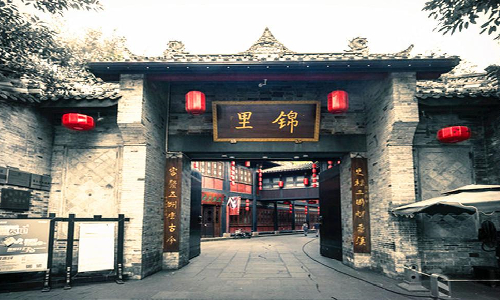
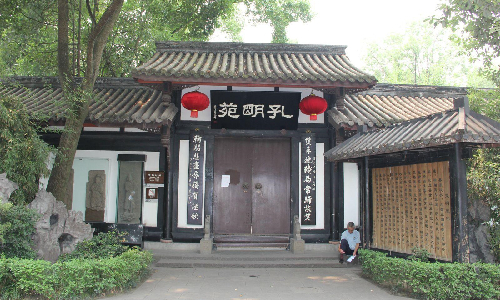
After breakfast, our guide will pick you up at the hotel and you will set out to Leshan Giant Buddha, which is about 150 KM away from Chengdu, and it takes about 2.5 hours to get there. Sitting on the east bank of the Minjiang River, the giant Buddha is the largest statue carved into a cliff in the world. The work of the statue began in 713 and was completed in 803. The total height of the Buddha is 71 meters, and even the foot of the Buddha is so large that more than 100 people can stand on one foot.
After the visit, you will enjoy your lunch, and then we will drive back to Chengdu. On the way, we will go to the Huanglongxi Ancient Town. Built almost 1,700 years ago, the town maintains Chinese folk culture since the Southern Song Dynasty (1127 - 1279). Moreover, it is also the hometown of Chinese folk fire dragon dance, and the residential buildings show various architectural styles of different times in Sichuan.
Your tour in Chengdu is to come to the end, and you will leave for Lhasa the next day.

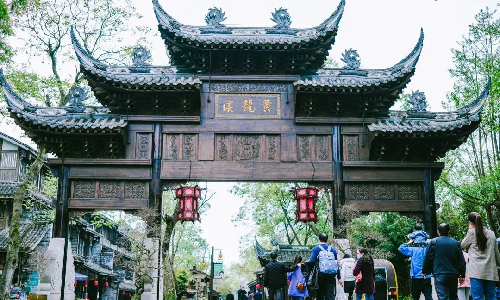
 Lhasa
Lhasa After breakfast, our guide will pick you up at the hotel, and then you will leave for the airport. You will take the estimated flight CA4112 13:05/15:45 to Lhasa. Upon your arrival, the local guide will be holding a sign with your name on it and waiting for you at the arrival hall, and then you will head to the hotel.
Located on the Qinghai-Tibet Plateau, Lhasa is the capital city of Tibet Autonomous Region and has a history of over 1300 years. Enjoying more than 3,000 hours of sunshine annually, it is also called the “City of Sunshine”. Moreover, different from that in other places of China, food in Lhasa is mainly beef, mutton, and dairy products which can help local people to withstand the cold. For people who visit a place with high altitude for the first time, in case of altitude sickness, it is highly recommended to avoid strenuous exercise.
Have a good rest and please do let your guide know if you have any uncomfortable feelings.
After breakfast, you will visit the Potala Palace. Built in the 7th century, the palace is a building complex integrating the palace, castle, and the Buddhist temple. It was originally built by Songtsen Gampo, the 33rd ruler of the Tubo Regime in Tibet, for marrying Princess Wencheng of the Tang Dynasty (618 - 907). In the 17th century, it became the Winter Palace of successive Dalai Lamas and the center of power politically and religiously in Tibet. The main structure of the Potala Palace consists of two parts: the White Palace and the Red Palace. The wall of the Potala Palace is also called the “sweet wall”. That is because every year in September, local Tibetan people will gather together spontaneously and paint the wall of the Potala Palace. The coating that they use is combined with milk, sugar, honey. That is why the wall is sweet. In 1994, the Potala Palace was listed as a World Cultural Heritage Site.
After the tour of the palace, you will have lunch, and then you will go to Barkhor Street, one of the oldest streets and the busiest business centers in Lhasa. In Tibetan, Barkhor means the “mid circumambulation”. Circumambulation means moving around a sacred object or an object of veneration. As Barkhor Street, together with Nangkhor Street (the inner circuit) and Linkhor Street (the outer circuit), forming three concentric circuits with the statue of the main Buddha enshrined in Jokhang Temple in the center, it is also called the “Sacred Road” by the Tibetan people. The buildings along the street are of old Tibetan style, showing the original scene of the ancient city of Lhasa. You can also buy some Tibetan souvenirs on Barkhor Street such as Tibetan knife, Tibetan tapestry, Tibetan silver ornament, and so on.
A short distance away from Barkhor Street stands the Jokhang Temple, enjoying the highest position in Tibetan Buddhism. It was originally built in the 7th century, and gradually became what it looks like today based on the repeated extension in the Yuan (1271 - 1368), Ming, and Qing Dynasties. The temple is also the oldest building made of wood and earth in Lhasa. More importantly, one of the three-year-old life-size statues of Sakyamuni was taken to Tibet by Princess Wencheng and has been shrined in the temple ever after.
After the tour, you may wander around by yourself in the evening and try some local food.

Today will be your last day in Lhasa, and after breakfast, the first place you will go is Norbulingka, which means “treasure park” in Tibetan. Built in the 1740s, it is a typical Tibetan park with more than 100 plant species, and it used to be the “Summer Palace” of successive Dalai Lamas. Through a 200-year expansion, it now covers an area of 360,000 square meters and therefore becomes the largest man-made park with the best landscape and most historical sites in Tibet.
Next, you will pay a visit to the Drepung Monastery, the largest monastery of the Gelug Sect of Tibetan Buddhism, with about 7,000 resident monks at its peak. Drepung means “rice heap” in Tibetan, which implies what the white buildings dotting among the hills look like. Occupying an area of about 250,000 square meters, the whole building clusters look quite magnificent. Most of the buildings here were built in the Ming and Qing Dynasties. You will be amazed by Thangka (a scroll painting used for worship), the statue of Buddha, murals, as well as exquisite dhvaja crafted with brocade and embroidery.
After the visit, you will have lunch and then set out to the Sera Monastery. Sera means “wild rose garden” in Tibetan. It is said that the place where the monastery was built was covered with wild roses. It is one of the “Three Great Monasteries” in Tibet, together with the Drepung Monastery and the Gandan Monastery. Apart from historical artifacts and impressive buildings, the Sera Monastery is also known for monks debating with each other on Buddhist knowledge. That is the highlight of the trip to the monastery.
That is the end of your stay in Tibet, and you will fly to Shanghai the next day.
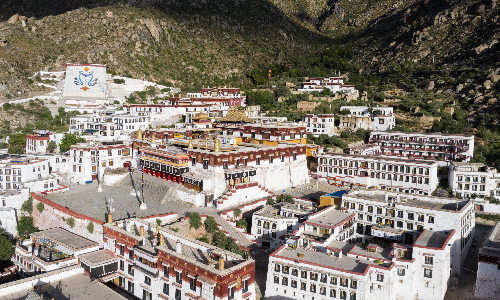

 Shanghai
Shanghai After breakfast, our guide will pick you up at the hotel, and then you will head to the airport. You will take the estimated flight SC6073 9:20/15:30 to Shanghai. Upon your arrival, the local guide will be waiting for you at the arrival hall, holding your name sign, and then you will head to the hotel.
Shanghai, China’s largest economic center and trade port is the country’s largest comprehensive industrial city, as well as one of the international metropolises in China. You will be impressed by not only the natural scenic spots but also the cultural attractions in this city. Moreover, Shanghai is also a paradise for shopping and therefore it is known as the “Oriental Paris”. Welcome to Shanghai and wish you a happy stay here.
After breakfast, you will set out to Yu Garden (closed each Monday), a place you must visit in Shanghai. Built in the Ming Dynasty, Yu Garden used to be privately owned, and Yu means “safe and sound” in Chinese. There are more than 40 ancient sites in the garden, including buildings, the opera stage, rockeries, and ponds. You will be impressed by its beautiful landscape.
The second stop of today’s trip is the Jade Buddha Temple. Built in 1882, the temple is one of the “Top Ten Attractions” in Shanghai. A transcendent Buddha crafted from pale-green jade is sitting in the temple, from which the temple gets its name. This Buddha statue is exquisite and decorated with lots of gems. The temple is of the architectural style of the Song Dynasty (960 - 1279) and mainly consists of the Hall of Heavenly Kings, the Mahavira Hall, the Jade Buddha Hall, and the Reclining Buddha Hall.
After the tour in the morning, having a delicious lunch will be a good choice.
After lunch, you will visit Shanghai Tower. As the Tokyo Tower to Tokyo, so Shanghai Tower is a landmark of Shanghai. With a height of 632 meters, the Shanghai Tower is a magnificent skyscraper, reflecting the charm of this modern city. Taking the high-speed elevator to the sightseeing hall on the 118th floor, which takes less than 1 minute, you can have a panoramic view of the whole city and you can buy some souvenirs there if you like.
Your next stop is the Bund, a historical and cultural waterfront. The Bund has witnessed the change and development of Shanghai since 1844 and marks the beginning of modern Shanghai. In the late 19th century, many foreign and Chinese banks were established on the Bund, and it, therefore, became the “Financial Street” of Shanghai, and also known as the “Oriental Wall Street” at that time. What is more, there stand 52 pre-World War II buildings with various architectural styles including the Gothic, Romanesque, and baroque, forming the well-known exotic building clusters on the Bund of Shanghai.
Walking from the Bund, you will get to Nanjing Road. Known as “the First Pedestrian Street” in Shanghai, it is a place that cannot be missed for those who enjoy shopping. With more than 700 hundred stores and shops, it is one of the oldest and the most bustling streets in Shanghai. Here old stores and modern buildings blend perfectly. Moreover, traditional local food sold in the stores with the time-honored brands is so tempting that visitors cannot help stopping and get a taste. Especially the local brand Shendacheng, it is famous for its sweet green rice ball. If you are a dessert lover, do not miss it. As nights fall, the whole street will be lighted, which makes these buildings even more splendid. Therefore, it will be a nice choice to stroll around the street, have a bite of local specialties, and enjoy the beautiful scenery in the evening.
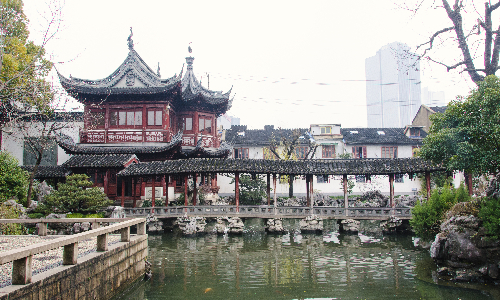
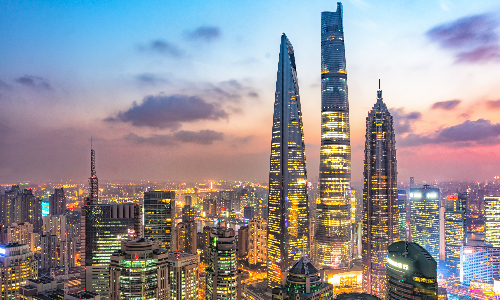
After breakfast, our guide will pick you up at the hotel and then take you to the airport. Your 12-day tour in China is to come to an end. Any advice about the tour from you is welcome. Have a safe flight!
Author: Chunlei Peng
Proofreader: Betsy He
| City | Five Star hotel list | Four Star hotel list |
|---|---|---|
| Beijing | Sunworld Dynasty Hotel Beijing Wangfujing | Sunworld Hotel Wangfujing |
| Chengdu | Sofitel Chengdu Taihe | Holiday Inn Express Chengdu Jinniu |
| Lhasa | Shangri-La Hotel, Lhasa | Thangka hotel |
| Shanghai | Ocean Hotel Shanghai | Courtyard by Marriott Shanghai Central |
 |
About your child or infant, please contact us for a discounted price.



We started with a few days in Beijing & ended in Shanghai, from where we visited the Forbidden City and Great Wall. In between we visited Terra Cotta Warriors Museum, Panda Base, Shanghai Disneyland.

We had a wonderful holiday in China which will remain long in the memory. China is a breathtakingly beautiful country full of splendid temples and palaces, mountains and rivers, peaceful rural scenes and bustling shopping streets.
 QUICK ENQUIRY
QUICK ENQUIRY